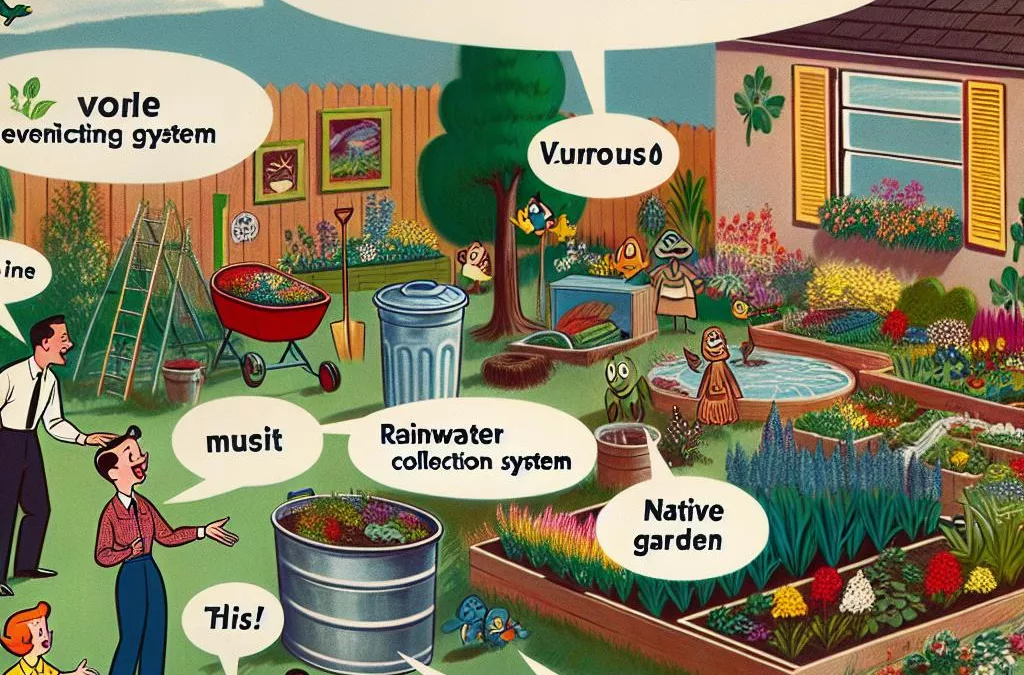Introduction
In today’s environmentally conscious world, eco-friendly landscaping is more than just a trend – it’s a moral and practical imperative. By adopting sustainable practices in yard management, homeowners can drastically reduce their environmental footprints while enhancing the beauty and functionality of their outdoor spaces.
Understanding Eco-Friendly Landscaping
Eco-friendly landscaping involves the integration of environmental responsibility, resource conservation, and aesthetic appeal in design. By prioritizing ecological balance, landscapers create yards that flourish naturally without excessive reliance on artificial interventions.
Key Principles of Sustainable Landscape Design
Key elements include water efficiency, soil health, the use of native plants, and promoting biodiversity. Techniques like xeriscaping, rainwater harvesting, and efficient irrigation systems are vital to conserving water, while composting and organic fertilizers support soil health. Selecting native plants accommodates local climates, reducing the need for water and fertilizers, and creating habitats for wildlife and pollinators boosts biodiversity.
Benefits of Eco-Friendly Landscaping
The advantages of sustainable landscaping extend beyond environmental impacts. A well-designed landscape reduces pollution and runoff, boosts biodiversity, and offers cost savings through decreased maintenance. Implementing energy-efficient outdoor practices even contributes to lower utility bills.
Design Elements for Sustainable Landscapes
Incorporating features like rain gardens and bioswales can manage stormwater runoff effectively. Permeable hardscapes prevent erosion while enriching groundwater. The integration of native plantings and wildlife habitats contributes to an eco-friendly yard that thrives harmoniously with nature.
Practical Techniques and Implementation
Water Conservation Techniques
Embrace drought-tolerant plantings and smart irrigation. Install rain barrels, use drip irrigation systems for precise watering, and explore smart controllers to reduce water waste.
Soil Health and Mulching
The foundation of sustainable landscaping is healthy soil. Adopt composting and mulching to enrich soil organically, minimizing the need for chemical inputs.
Native Plant Selection and Xeriscaping
Native plants require less maintenance, and xeriscaping enables low-maintenance, water-efficient yards that flourish in arid conditions.
Rainwater Harvesting and Permeable Paving
Implement methods for collecting rainwater to use in irrigation and consider permeable pavers to reduce ecological footprints and aid groundwater replenishment.
Creating Wildlife Habitats
Designing your yard to attract and support pollinators and other wildlife helps promote a vibrant ecosystem, offering food and shelter essential for biodiversity.
Energy-Efficient Outdoor Lighting
Using LED lights and smart systems reduces energy consumption while maintaining the ambiance and safety of outdoor spaces.
Using Recycled Materials for Hardscaping
Opting for recycled materials in hardscaping projects not only reduces waste but also encourages sustainable consumption.
Conclusion
Eco-friendly landscaping aligns art with eco-conscious strategies to transform outdoor spaces into vibrant ecological havens. By embracing both theoretical strategies and practical approaches, homeowners can create beautiful and sustainable yards that stand the test of time.

